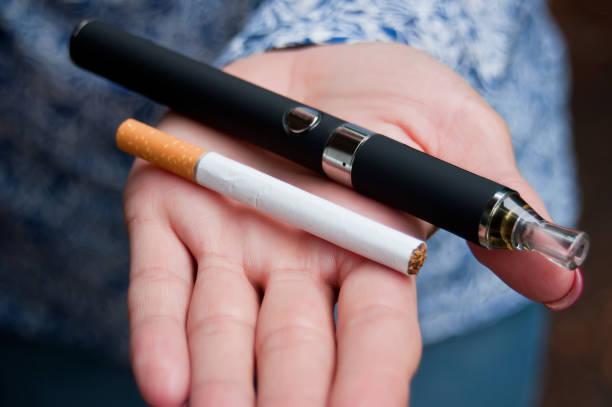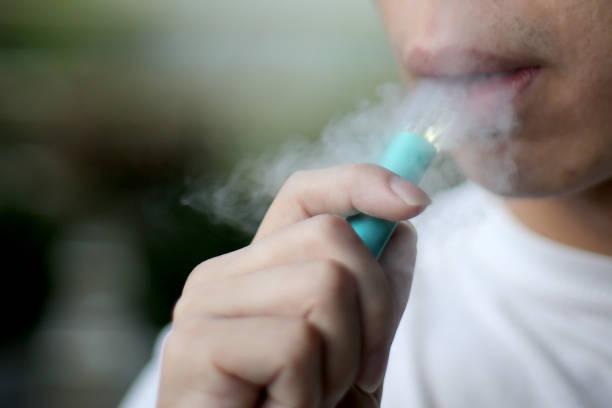In today’s world, vaping has emerged as a popular alternative to traditional smoking, quickly changing the landscape of smoking culture. But beyond its allure of sleek devices and trendy flavors, there’s something deeper fueling the rise of vaping — loneliness. This isn’t the kind of loneliness that just means being physically alone, but rather a more complex emotional need driven by stress, isolation, and the search for emotional relief. As e-cigarettes, or vapes, grow in popularity, it’s clear that many people are turning to them as a way to cope with their inner struggles. And loneliness, in particular, seems to be a major factor behind the growing vape culture.

Let’s dive into why loneliness and vaping have become so intertwined, and how the vaping industry is tapping into this growing need for connection, comfort, and even escape.
The Emotional Connection: Why People Vape to Relieve Loneliness
Loneliness is an ancient human emotion, but in today’s modern society, it feels more widespread than ever. With fast-paced work schedules, constant pressure, and digital socializing that often lacks the depth of face-to-face interactions, loneliness can hit harder than ever. After all, social media might connect us with hundreds of people, but how many of them are we really connecting with on a deeper level? The pressure to keep up with everyone’s “highlight reel” online often leaves many feeling more isolated than before.
Vaping, with its convenience and appeal, offers something that might feel like a temporary solution. With devices that are easy to carry, a range of flavors to suit any mood, and the idea that vaping is somehow “less harmful” than smoking traditional cigarettes, many individuals find themselves reaching for a vape when they’re feeling alone or stressed. The act of vaping, often paired with a soothing flavor, provides a brief escape. It’s like a tiny ritual that allows people to unwind and feel just a little less disconnected.
The Psychological Pull: How Vaping Becomes an Emotional Outlet
Vaping offers more than just a quick nicotine fix. For many, the act itself becomes a way to deal with emotions, especially when they’re overwhelmed by stress or loneliness. There’s something inherently calming about the repetitive motion of inhaling and exhaling, almost like a form of self-soothing. The different flavors — fruity, minty, or even dessert-inspired — create a sensory experience that provides instant gratification, offering a momentary sense of pleasure.

But it’s not just about the flavor. The experience of using a vape often mimics the comforting routine of traditional smoking. For those who feel alone, especially after a long day at work or when social situations feel awkward, vaping can be a form of relief. It’s not about needing the nicotine per se, but the ritualistic aspect — the quiet, the flavor, and the feeling of something familiar in an otherwise uncertain world.
The vaping industry has capitalized on this emotional need, offering products that are portable, stylish, and designed with the user’s feelings in mind. Instead of just providing a nicotine hit, companies have started marketing their vapes as a means to “enhance your lifestyle” — to not only reduce stress, but to add a little joy to the user’s day.
Vaping as a Social Bridge: Connecting in a Disconnected World
Loneliness often isn’t just about being physically alone; it’s about feeling disconnected from others. In the age of digital relationships, it’s easy to feel like we’re missing out on genuine human connection. Many young people, especially, struggle with this sense of isolation — they might have hundreds of “friends” on social media but still feel alone in their day-to-day lives. Here, vaping can serve as a bridge.

For some, vaping can even become a social activity. Vape shops, social media groups, and online communities are spaces where people come together to talk about their favorite flavors, compare products, or even meet new people. In this sense, vaping becomes more than just a solitary act — it transforms into something that’s shared. Whether it’s meeting up with friends to vape in a park or posting photos of new devices and flavors on Instagram, vaping creates opportunities for interaction, for feeling part of a group, even if that connection is virtual.
For others, the act of vaping is a way to bond with a small circle of friends. Picture this: a group of friends at a concert or hanging out in the park, casually vaping and sharing flavors, building an experience around a shared product. It’s not just about the nicotine; it’s about creating a moment of connection. It’s a lot like how some people gather around coffee or cocktails. The act itself creates a shared ritual, turning a solo activity into something social.
The Business of Loneliness: How Vape Companies Are Tapping Into Emotional Needs
Recognizing that loneliness and emotional needs are driving a large portion of their sales, vape companies are tapping into this market with more than just nicotine. Brands are offering an array of flavors — everything from classic tobacco to tropical fruit mixes — designed to cater to people’s moods and preferences. The goal is to create a product that not only satisfies the physical cravings of smokers but also fulfills an emotional desire for comfort or excitement.
Additionally, vape companies are investing in sleek, portable designs that appeal to a younger, image-conscious demographic. Many vapes now come in stylish, high-tech packaging, with features like LED lights or customizable settings that allow users to personalize their experience. Some devices even connect to smartphone apps, letting users track their vaping habits, adjust the vaporizer’s intensity, and connect with other vapers.
In a sense, vaping is being marketed not just as a product but as a solution to an emotional need. It’s not just about satisfying nicotine cravings — it’s about finding a way to fit into a lifestyle that feels connected, comforting, and modern.
Navigating the Fine Line: Balancing Marketing and Social Responsibility
While vape companies are undoubtedly tapping into a lucrative market, they must tread carefully. The growing reliance on vaping to cope with loneliness and stress raises serious concerns about potential addiction and long-term health effects. The reality is that while vaping might seem like a harmless alternative to smoking, the full impact on mental and physical health is still being studied.

Vape companies have a responsibility to ensure that their marketing doesn’t encourage unhealthy habits or create dependency, particularly among vulnerable populations like teens. Some have been criticized for making their products appear too attractive or safe, failing to adequately warn consumers about the potential risks.
In response, the vaping industry is under increasing scrutiny from government regulators and health organizations, which are pushing for tighter controls on advertising and product safety. For vape companies, finding the balance between capitalizing on emotional appeal and being socially responsible is critical for long-term success. In order to maintain consumer trust and ensure the longevity of their business, these companies must focus on transparency, quality, and education.
The Road Ahead: Innovation and Sustainability in the Vape Industry
Looking forward, the future of vaping will depend on how companies continue to innovate, especially when it comes to creating products that are both healthier and more sustainable. While the focus has been largely on emotional appeal and social connection, the next wave of vaping may also include more eco-friendly devices and healthier alternatives.
The rise of vaping to cope with loneliness has already reshaped how we think about smoking and socialization, but it’s important to remember that addressing the root causes of loneliness — like stress, mental health struggles, and lack of meaningful connection — is just as important as finding temporary solutions. If the vaping industry can evolve to become not just a source of relief but a force for positive change, it might just find its place in a future that’s healthier, happier, and more connected.
For now, though, we continue to vape, not just to relieve cravings, but to find a moment of peace, a feeling of belonging, and maybe, just maybe, a little bit of comfort in an otherwise disconnected world.


